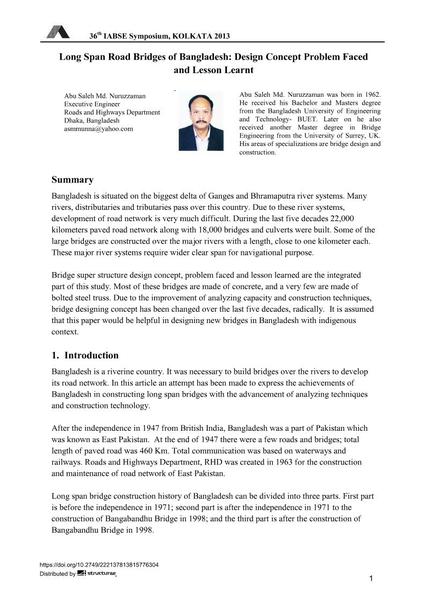Long Span Road Bridges of Bangladesh: Design Concept Problem Faced and Lesson Learnt

|
|
|||||||||||
Détails bibliographiques
| Auteur(s): |
Abu Saleh Md. Nuruzzaman
|
||||
|---|---|---|---|---|---|
| Médium: | papier de conférence | ||||
| Langue(s): | anglais | ||||
| Conférence: | IABSE Symposium: Long Span Bridges and Roofs - Development, Design and Implementation, Kolkata, India, 24-27 September 2013 | ||||
| Publié dans: | IABSE Symposium Kolkata 2013 | ||||
|
|||||
| Page(s): | 1-7 | ||||
| Nombre total de pages (du PDF): | 7 | ||||
| Année: | 2013 | ||||
| DOI: | 10.2749/222137813815776304 | ||||
| Abstrait: |
Bangladesh is situated on the biggest delta of Ganges and Bhramaputra river systems. Many rivers, distributaries and tributaries pass over this country. Due to these river systems, development of road network is very much difficult. During the last five decades 22,000 kilometers paved road network along with 18,000 bridges and culverts were built. Some of the large bridges are constructed over the major rivers with a length, close to one kilometer each. These major river systems require wider clear span for navigational purpose. Bridge super structure design concept, problem faced and lesson learned are the integrated part of this study. Most of these bridges are made of concrete, and a very few are made of bolted steel truss. Due to the improvement of analyzing capacity and construction techniques, bridge designing concept has been changed over the last five decades, radically. It is assumed that this paper would be helpful in designing new bridges in Bangladesh with indigenous context. |
||||
